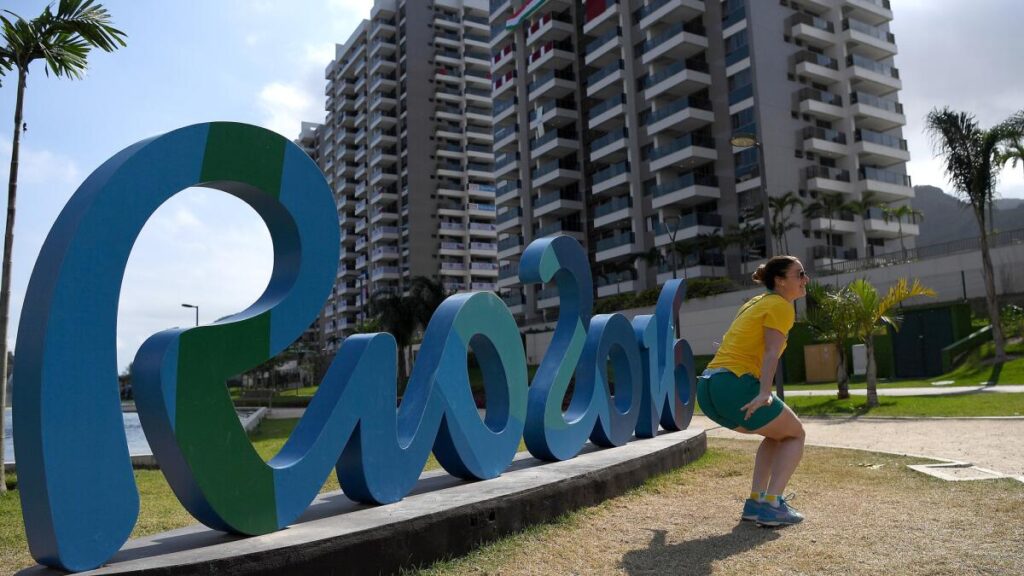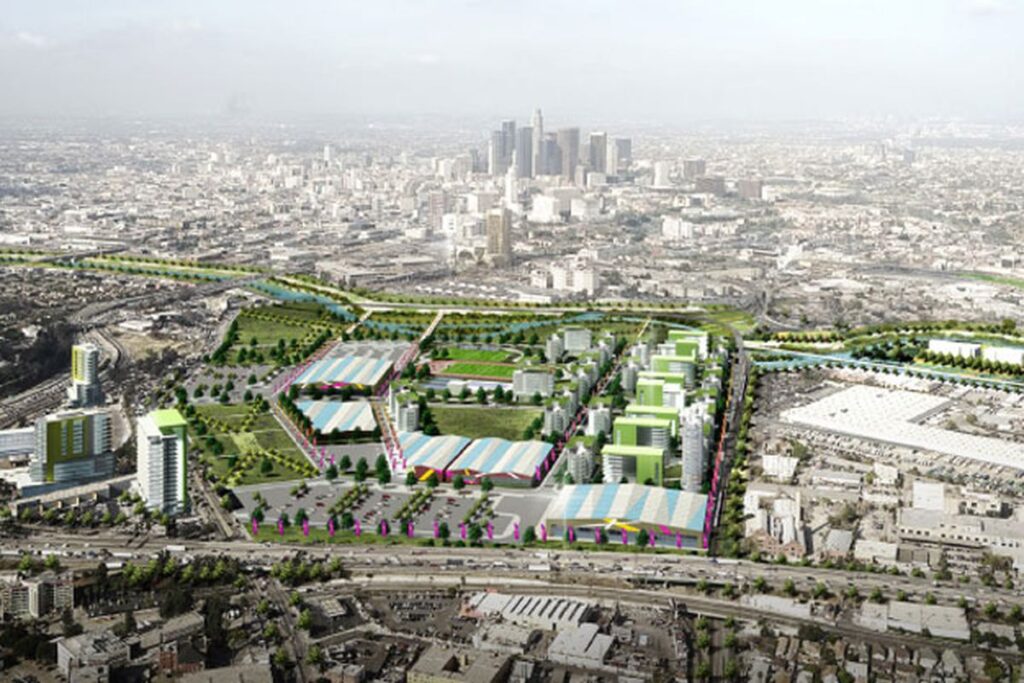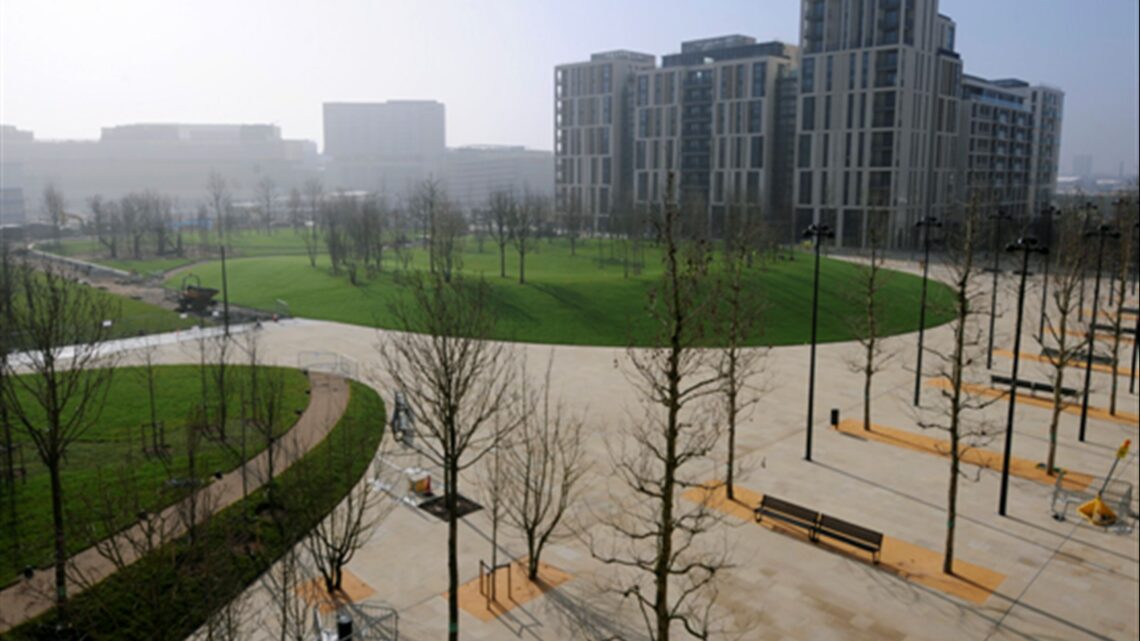The Baldwin Hills was the the location of the first Olympic Village for the modern Olympic games. The village was built for the 1932 Los Angeles Olympic Games but not much, if anything, remains of the village. I have gathered information on the Olympic Athlete’s Village from the sources listed below, but the accounts from these sources are somewhat vague with respect to the actual location in the Baldwin Hills and not completely consistent with one another.
In particular, I have found accounts that mention two different locations, more than a mile apart from one another. One is in the Northwest part of the Baldwin Hills in an area called Blair Hills that is now part of Culver City, and the other referrence is to an area near Creshaw and Vernon avenue in the South East part of the Baldwin Hills called View Park. The second location appears most consistent with the drawings and photos of the village itself. One account places the village in the Crenshaw or Angeles Mesa district, in the hills to the west of Crenshaw Boulevard south of Vernon Avenue. The roads Olympiad Drive and Athenian Way in this area commemorate its history.
See Also: Green waste removal company

The village comprised between 500 and more than 600 two-room dwelliings and included post and telegraph offices, an amphitheater, a hospital, a fire department, and a bank. The village was buult on between 250 and 331 acres that was loaned by the heirs of the estate of Lucky Baldwin. The buildings were removed after the games.
While I have not wandered the streets in either of these areas looking for remnants of the village, I do not think that there is anything actually that remains in terms of structures. From some accounts, the buildings were temporary , and I found reference to two of them being physically moved to some other location in California.
During the games, the Olympic Committee obtained permission to use the shooting range of the Los Angeles Police Revolver and Athletic Club (LAPRAAC) for the pistol and rifle competition. When the games were over, the Department was given a dormitory building which had been used at the Olympic Village in Baldwin Hills. This building was dismantled by off-duty offices and moved to the Elysian Park site, where it was reassembled for use as a clubhouse and now served as part of the present Academy restaurant and cafe.

The pictures on this page were gathered from other sources on the web, and clicking on the pictures will bring you to those sources. Other sources of information that discuss the athlete’s village are listed below. Let me know if you find more information and I will add it to this page.
More sites that mention the 1932 Los Angeles Olympic Village:
- One of the most complete descriptions of the Athlete’s village can be found starting at the bottom of the first page in a paper by Mark Dyreson available on the web site of the Amateur Athletic Foundation of Los Angeles.
- Experience in the Olympic Village by Frank Wykoff
- Photo from the LA Public Library of trucks lined up to begin construction of the olympic village.
- Culver City’s History of the Blair Hills Annexation mentions the Olympic Village.
- A site on California History describe the 1932 Olympic Games and the Athlete’s Village.
- The site of the Swedish Olympic Committee describes the 1932 Los Angeles Athlete’s Village
- The local Consolidated Realty Board website mentions the historical location of the Athlete’s Village.
- Description of the first Olympic Village from the Sports Network.
- Description of 1932 Los Angeles Olympics in Encyclopoedia Britannica (first page only without subscription)
- Account of the moving of one of the dormitory buildings to the Police Academy by the Los Aneles Police Department.
- about.com describes the 1932 Olympic games and mentions the Athlete’s village.
- Olympic Committee photo archive shows life in the athlete’s village.
More to read: Enhancing Tree Health and Aesthetics


